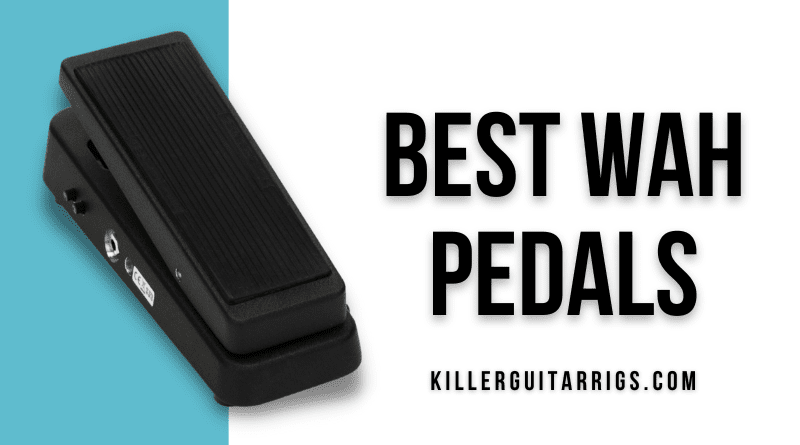Today we bring you the best wah pedals on the market. Given the vast popularity of this effect, there are plenty of choices available out there. This list features different types of wahs, from traditional to modern and everything in between, so you can find one that fits your needs and preferences.
The Wah is the undisputed king of expression pedals. It started as a novel effect for guitarists in the sixties until Jimi Hendrix and others showed the world how far this pedal could really go. Today, the wah pedal is a staple of most guitarists’ pedalboards and is incredibly useful in a great variety of situations and styles.
So rest assured that this will likely be a good investment for you as a player. In this article, we help you decide among various choices, from simple and inexpensive to versatile and complex. Keep reading.
Read more about our review process.

Xotic XW-1 Wah Pedal
Features: Bias/Q/Treble/Bass controls, Adjustable pedal tension, True bypass switching
Benefits: Unparalleled adjustability, No sound coloaration when disengaged, Real vintage tones
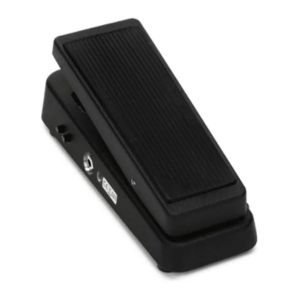
Dunlop 535Q Cry Baby 535Q Multi-wah
Features: Adjustable frequency range sweep, Switchable boost, Low power circuitry
Benefits: Highly noise resistant, Bulletproof construction, Truly customizable output
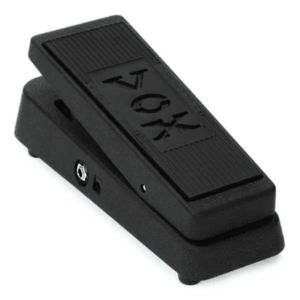
Vox V845 Classic Wah Pedal
Features: Sturdy ABS shell, '60s Spec, Non slip foot pad
Benefits: Authentic vintage tones, Straight forward operation, No batteries required
Contents
Our Top 3
The Dunlop 535Q Cry Baby 535Q Multi Wah is our Top Pick for this list. This pedal combines the best of tradition in its design with modern features for today’s players. Besides having a fantastic build quality, it’s also quite versatile, with several options to fine-tune your wah sound according to the musical situation at hand.
The Vox V845 Classic Wah Pedal is our Best Budget Choice. This wah pedal is designed to emulate the popular wah sound from the ’60s. This pedal goes a step further as it is hum-free and comes with the quality and tradition that Vox is known for.
For players that need the best, the Xotic XW-1 Wah Pedal is our Editor’s Choice. This pedal’s design is based on the Vox Claude McCoy from the ’60s, which was used by Jimi Hendrix, while adding versatility for the modern player. This pedal is smaller than most and excels for its quality and malleability.
Individual Reviews

Dunlop 535Q Cry Baby 535Q Multi-wah
Vintage vibe and feel with a modern touch for ultimate versatility.
Dunlop is the go-to brand for wah pedals. The 535Q features all the traits that have made this brand a favorite among guitarists, but with a set of characteristics for the modern player.
The Cry Baby 535Q comes in standard Dunlop wah form factor and is quite sturdy. This pedal features six different frequency ranges as well as a variable wah Q. This allows you to easily fine-tune your sound and pick the tonal flavor that suits you best.
This Dunlop Wah comes with a boost circuit that can take your signal to +18 dB in order to deal with any audible volume loss. The 535Q’s design also features a hardwire bypass to preserve the integrity of your signal when the pedal isn’t engaged.
In use, the 535Q made it evident that we were dealing with a versatile wah. We were able to fine-tune our sound via four controls conveniently placed on the sides of the pedal.
The first one was Range Selector. Here we were able to pick from six different center frequencies to get the wah sound we wanted. All six were useful and we were able to go from a sound with a defined low-end all the way to tones with screeching high-end harmonics.
The second control was Volume, which altered how much gain was added to our sound by the Boost switch. On the lower part of the 535Q, we found a bottom that triggers the boost circuitry.
To further fine-tune our sound, we relied on the Variable Q control. Here we were able to alter the width of the bandpass and go from gentle sweeps to a sharp wah. This variable Q control works great when combined with the different frequency centers, providing a great deal of tonal control for your wah. This wah pedal can be powered via 9-volt battery or a Dunlop ECB003 adapter (sold separately).
Verdict: The Cry Baby 535Q is a fantastic pedal that allows you to craft the exact wah tone you’re after. It’s versatile and well built and comes from one of the most renowned wah pedal makers in history.

Vox V845 Classic Wah Pedal
Traditional style wah effect from the inventor of the wah pedal.
This pedal was designed to emulate the original Vox wah from the 60s. It comes from one of the most respected and popular brands among guitarists and delivers traditional wah in a sturdy and durable package.
The Vox V845 Classic Wah Pedal features a simple and straightforward design that lets the true nature of your sound come through. Although it is truly affordable, it is also built with high-quality materials, all housed in a sturdy and durable aluminum shell.
This pedal is lightweight for a wah-wah, which is partly because the V845 doesn’t have a battery compartment and is instead powered via 9-volt power supply.
In use, this pedal gave us a simple plug-and-play approach with no noticeable hum. The wah sound of the V845 is reminiscent of the ’60s and ’70s, with a nice full body of traditional ways. This pedal worked great in clean settings as well as in overdriven sounds.
This wah pedal doesn’t have any knobs and controls. This fact will be particularly appealing to beginners and folks who are shopping for their first wah. In other words, this pedal doesn’t require any previous knowledge of how to work a wah in order to make it sound good. In addition to being practical and affordable, the V845 gives you the true sound of wah-wah with a vintage flair.
Verdict: The Vox V845 Classic Wah Pedal is a great choice for beginners or those looking to get their first wah. It features a simple design with no knobs or controls, which gives you the authentic tone of traditional wah. Additionally, this pedal is very affordable and comes from one of the most respected brands in the game.

Xotic XW-1 Wah Pedal
A highly tweakable boutique wah pedal for the discerning guitarist.
Based on the Italian-made celebrated Vox Clyde McCoy wah-wah pedals from the '60s, this wah is a versatile and quality tool. It comes with a variety of design features that will allow you to fine-tune your sound and offers fantastic tone and durability.
The Xotic XW-1 Wah Pedal allows you to capture the sound and flair of sought-after late ’60s Italian wah, but with modern functionality. Icons like Jimi Hendrix and Eric Clapton made the Vox Clyde McCoy wah pedal a cornerstone of their sound in the late sixties, adding to the popularity of this pedal.
Right out of the box, the most striking feature is its small size. This unit is about 20 percent smaller than your typical wah pedal.
It features four small pots on the right side. The first two control the bias and wah Q respectively. The third adds +15 dB for treble, and the fourth does the same but for bass frequencies.
We started our tests by turning up the bias control and were able to tighten the bass response and increase the overall output. It also allowed us to explore different tone options and was very responsive, even at the smallest of turns.
With the wah Q, we were able to narrow the filter peak and then widen it at will. In our tests, these changes altered our sound considerably, which gave us great versatility to try out different things for different contexts and situations.
This pedal works with a 9V battery adaptor that’s reachable by removing four bottom-plate screws. A small red box mounted to the PC board houses four DIP switches. These modify toe-down range, input gain, presence cut, and wah-Q frequency.
When playing with our Strat, we found the presence cut was able to smooth out some of the harsher high-end frequencies. This was a nice addition to the design as it makes it possible to really get specific with the sound you’re after, regardless of single-coil or humbucker use.
Another great feature was the wah-Q DIP, which allowed us to sweep a deeper, heavier feel and tone which can be turned into a growl when we switched to our Les Paul and cranked up the gain.
Verdict: The Xotic XW-1 Wah Pedal combines the vintage feel of late ‘60s Italian wahs, with functionality and features for the modern player. This pedal is for the guitarist who knows what he wants and wants to have full control over the tone, via a series of controls to make it possible.
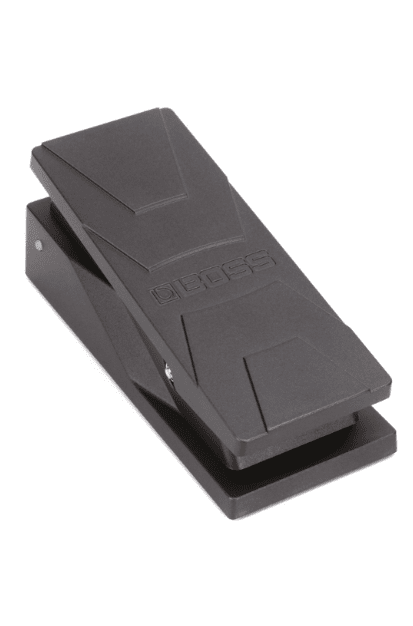
Boss PW-3
Compact wah with modern and vintage.
This pedal is smaller and lighter than your typical wah. It also offers two unique voicings so you can choose between a modern or vintage sound, but remains a very simple and straightforward pedal, with the reliable Boss build quality.
The Boss PW-3 is a fantastic solution for guitarists who have a cramped pedal board but still need a flexible wah pedal. With a compact size and low weight, this wah-wah offers two switchable voices so you can dial in either a vintage or a modern sound.
Both the input and output jacks are in the rear part of the pedal, as well as the small switch that lets you pick between Rich mode for modern tones and vintage mode for a more traditional wah sound.
In use, the PW-3 was a very quiet pedal, which is a fantastic and often unheralded feature. When we tried it on Vintage voice, this pedal gave us a nice open sound. The resonant point was just a tad higher than midrange, and we got a crisp top end as well. This mode sounded particularly good with our Strat.
For the Rich voice, the resonant point moved downwards and we got a fat vocal-like wah sound. The mid-low and bottom ends were present in a nice and full way. Again, this mode also functioned better with single coils than with humbuckers.
Another great feature on this Boss wah pedal is the LED indicators, which let you know whether the effect is engaged or not. In true Boss fashion, this pedal is well built and sturdy, even though it is lighter than its competitors.
Although this pedal sounded good in both Vintage and Rich voices, it paired better with single coils. In other words, this may not be the best choice if you play a Les Paul or humbucker-equipped guitar.
Verdict: The Boss PW-3 is a nice wah pedal that gives you a vintage and modern wah tone via its two independent voicings. It is built with Boss’s renowned quality and durability, is simple to use, and pairs particularly well with single-coil guitars.
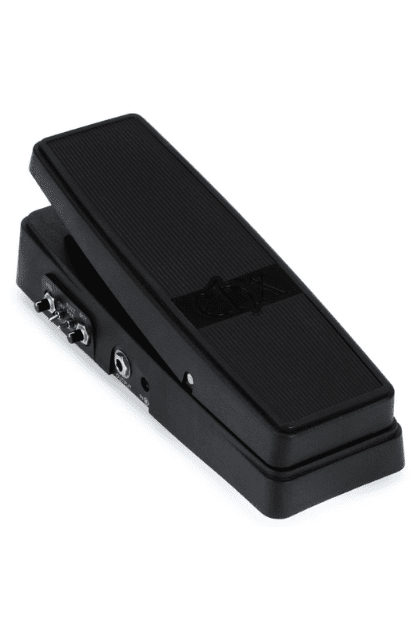
Electro-Harmonix Cock Fight Plus
Wah and fuzz effects bundled in one powerful pedal.
This pedal offers something unique and different for players looking for something off the beaten path. Besides offering two types of wah effect, this EHX pedal also features a fuzz circuit, as well as control options to add versatility to its uniqueness.
The Electro-Harmonix Cock Fight Plus features the usual Electro-Harmonix flair and fantastic build quality. This pedal comes with two switchable wah filters for selecting between a classic wah and a talking wah.
The first one is a traditional wah pedal circuit based on the Electro-Harmonix Crying Tone wah pedal. In our tests, we got a smooth and even sound that was very rooted in a wah behavior with a vintage vibe as well as good sensitivity. We found this great for playing styles like classic rock and similar.
We then added some fuzz which intensely highlighted the wah effect, while adding a good dose of bass frequencies and powerful saturated gain. Here we found ourselves channeling Hendrix, but with a modern twist.
In our tests, we played with the fuzz by placing it either pre or post-circuit, going from synth-style effects to classic rock smoothness in a heartbeat. The pre/post selection is done via a small switch on the left side of the pedal. It sits right next to the Cry/Talk mode switch.
Later we switched on the formant filter mode for Talk Wah, where we got a vowel-like talking wah. This was reminiscent of that Peter Frampton talk box or some kind of vocoder. Right next to this switch there is a bigger volume knob.
On the other side of the pedal, we found a Bias knob that controls the voltage of the pedal for producing either crackling gated fuzz or fuzz tones similar to the Big Muff distortion and even Holy Stain pedal. The Bias knob is right between the Tone and Drive knob.
This is a great pedal for players that like something a bit different and also tend to love EHX fuzz. However, it may be a bit strange for those that gravitate toward a more traditional approach to wah-wah.
Verdict: The Electro-Harmonix Cock Fight Plus combines two types of wah effect with fuzz, with various controls to dial in your ideal tone. This pedal sounds great and is a unique beast for those looking for an alternative wah pedal.
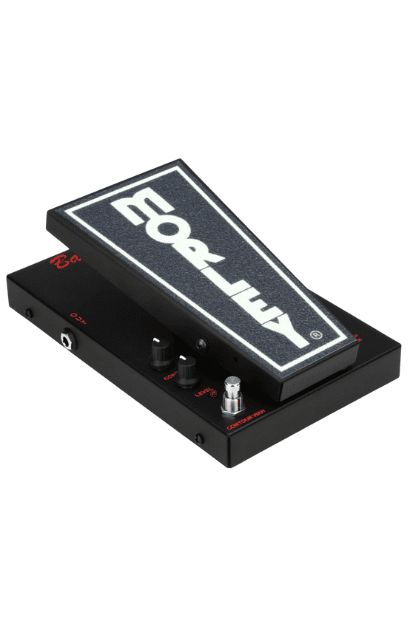
Morley Steve Vai Bad Horsie Electro-Optical Contour Wah
A wah pedal co-designed by one of the greatest guitarists ever.
This pedal features an Electro-optical design for eliminating any potential scratchiness in your wah effect. Besides offering great sounding wah and fantastic functionality, this pedal also includes a wah mode that features Steve Vai's precise settings.
The Morley Steve Vai Bad Horsie Electro-Optical Contour Wah was built according to the original ’90s-era pedal with full dimensions. It features the unique Bad Horsie mode, which contains Steve’s precise settings. Additionally, Morley included a second mode that allows you to customize your frequency and output.
In Bad Horsie mode, we got a fantastic wah sound that was very even and smooth. The attention to detail that Steve Vai is known for came through in the sound of this mode with unmatched precision.
For the second mode, we were able to dial our own sounds, granting us some flexibility. We were able to try different contour levels via the Contour knob. This adds versatility to the Bad Horsie.
In our tests, the Clear-Tone buffer circuit allowed us to preserve the integrity of our tone to the fullest. We had zero tone loss and our signal level was kept intact whether we were in bypass or wah modes.
This pedal doesn’t have any outmoded gears or potentiometers. Instead, it employs Morley’s optical circuitry. This makes the Bad Horsie a very quiet pedal that is nearly indestructible.
Additionally, the Bad Horsie is built like a tank and features a steel housing for maximum durability. As a matter of fact, Dunlop is so confident in the toughness of this pedal that they offer a lifetime warranty on it.
Although this is a great-sounding pedal with fantastic features and build quality, it takes up too much space, making it impractical for most guitarists and pedalboards.
Verdict: The Morley Steve Vai Bad Horsie Electro-Optical Contour Wah is a great wah pedal that features the legendary guitarist’s precise settings. You get an impressively smooth wah pedal that also allows you to dial in your own sound, but is a bit big for most real-world guitarists.
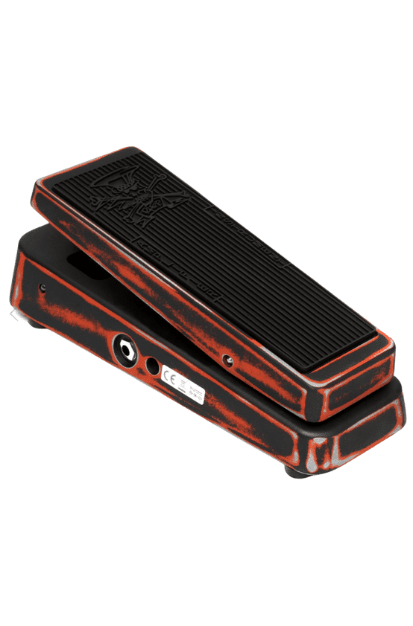
Dunlop SC95 Slash Cry Baby Classic
Thick and warm sounding wah without harsh highs.
Dunlop enlisted the help of one of the most emblematic guitar heroes do put out a killer wah pedal for rock. With a unique and signature voice and true bypass switching, the Slash Cry Baby delivers a fantastic fat tone for your hard rock riffs and solos.
The Dunlop SC95 Slash Cry Baby Classic is an updated version of the Guns N’ Roses guitarist’s wah pedal. Dunlop decided to eliminate the preamp from the previous version, and just focus on the wah. This made sense, as most folks playing hard rock were unlikely to use the distortion on the previous version, and that is especially true for Slash himself.
This wah pedal sounds fatter than most and, as expected, paired particularly well with our distorted Les Paul signal. It features three sweet spots, thanks to a custom-wound inductor that works in tandem with a silky-smooth pot. This allowed us to create wah effects ranging from baritone to soprano to treble.
We moved the rocker forward to create a warm wah that was a bit bass centered. For more typical midrange wah tones we took it about midway, while the upper-midrange/treble wah effects happened right before the switch was activated and with the rocker on a fully forward position.
When we tried the SC95 with our Strat, we got detailed overtones and a more nuanced playing experience, both with clean and saturated tones.
A great feature of this pedal is the Blue LEDs light on the sides, so you always know when it’s engaged.
This pedal consistently produced a throaty and powerful wah tone that was present throughout our tests, for both riffing and soloing and in all pickup positions. As great-sounding as it is, the CS95 may be a bit limiting for those interested in styles other than hard rock.
Verdict: The Dunlop SC95 Slash Cry Baby Classic is a fantastic-sounding wah pedal for those who lean towards hard rock and similar styles. It features three voicings/sweet spots and is very well built with Slash’s logo and overall vibe.
How to Choose The Right Wah Pedal for You
How Does the Wah Effect Work?
Wah pedals work by activating a bandpass filter with a resonant peak at its low pass roll-off frequency. The guitarist then uses the rocker plate or foot pedal on top of the unit in order to move the frequency of the resonant peak. This constant up and down movement creates the unique crying wah sound.
In other words, wah pedals function by moving the center frequency of the filter and boosting a band of audio.
Which Wah Pedal is Right for Me?
There are a myriad of wah pedals to fit the different needs and preferences of diverse players. A lot of a player’s preference for a particular wah pedal comes from said pedal’s sound or voicing. You can have a vintage voicing or a more modern one, as well as anything in between.
The voicing refers to the character of the wah. Many pedals are simple and consist only of the rocker plate. Here, the criteria and design choices of the pedal builder make a big difference.
These pedals come with a pre-set frequency range that can be treble-focused, bass-focused, or anything in between. This also applies to the center frequencies, which can differ greatly from pedal to pedal. As with most gear, it is important that you try it out and hear exactly what you are getting.
Simple vs Complex
Another important consideration is whether you want to be able to fine-tune your sound via knobs and other controls, or if you just want a traditional and simple wah with nothing but the rocker plate on top.
In case you like to truly get into the nuts and bolts of your sound, you can get a wah that offers you more than one range of frequencies. Additionally, you may also want a wah that lets you define its Q. The Q simply refers to the ratio of the center frequency to bandwidth. Maybe you like the frequency range boosted by the filter to be narrow for some situations and wide for others.
Being able to manipulate the Q and the center frequency increases the versatility of the wah pedal dramatically. However, if this sounds too technical for you, stick with a basic wah-wah for now.
Beyond Wah
Some pedals go beyond just offering wah. As varied as a wah sound and character can be, some companies also add other functions. The most common of them is distortion. Some wah pedals also come with fuzz or distortion as an added value. Others also act as a volume pedal. Again, it is crucial that you try these models if you are considering buying them. You might find that their distortion is not what you are looking for, or the opposite may also be true.
Final Thoughts
The Wah pedal makes up an essential part of plenty of guitarists’ rigs all over the world. This popular effect opens up a palette of options and sounds that can be used in many contexts and has arguably been one of the most popular pedals for the past four decades.
To recap our top choices, the Dunlop 535Q Cry Baby 535Q Multi Wah is our Top Pick for this list, offering a nice blend of tradition with modern features for today’s guitarist. The Vox V845 Classic Wah Pedal is our Best Budget Choice and emulates the popular wah sound from the ’60s. Finally, for discerning players, the Xotic XW-1 Wah Pedal is our Editor’s Choice. It offers fantastic sounds, great versatility, and superior build quality, in a small form factor.

